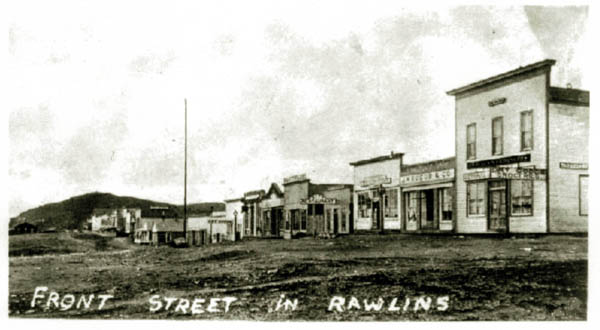
Front Street, Rawlins at intersection with Third Street as viewed from
the grounds of the Union Pacific passenger depot, approx. 1884. The first two
buildings house the J. W. Hugus & Co. The Hugus mercantile
chain is discussed on the Saratoga pages. The fourth building
houses the U P Restuarant. The scene was the location of the hanging of Big Nose Parrott in 1881, discussed on the next page.
Rawlins, originally Rawlins Springs, was founded in 1868 with the arrival of
the Railroad and named by Granville M. Dodge after Gen. John A. Rawlins, who visited the
area on a tour of the west in 1867. See next photo. Within two years it had attained a
population of 574 including 81 members of the military assigned to Fort Rawlins. It was
incorporated as a municipality in 1886. Carbon County, itself, predates the
formation of Wyoming Territory and was created by the Dakota Legislature and included
present day Natrona and Johnson Counties.
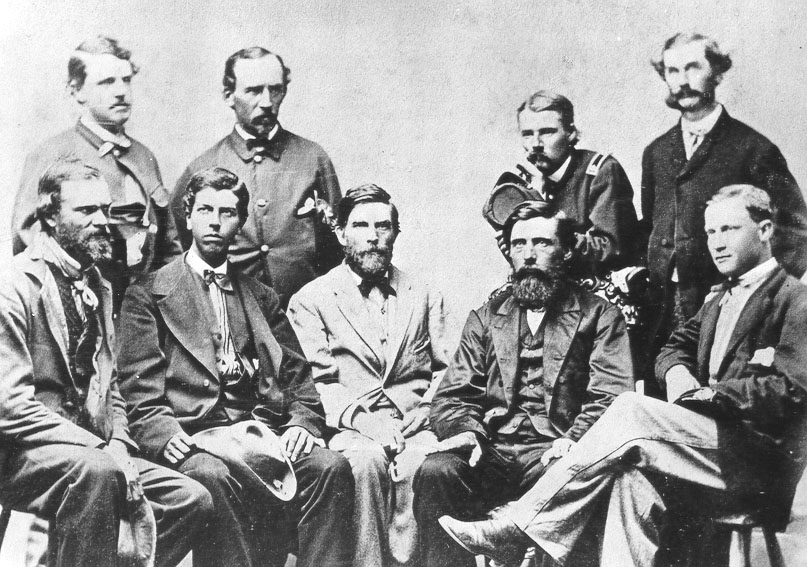
Rawlins Party, 1867: Back row - Left to Right: Lt. J. W. Wheelan, Lt. Col. J. K. Mizner,
Commanding Escort; Dr. Henry C. Terry, Asst. Surgeon; John E. Corwith,
Galena, Ill. Front Row: David Van Lennep, Geologist; John R. Duff, Mass.,
Gen. G. M. Dodge, Chief Engineer UPRR; Brig. Gen. John A. Rawlins, Chief of Staff;
Major W. Mck. Dunn, Aide de Camp to General Rawlins.
The Rawlins party was escorted by
two companies of cavalry and two companies of infantry under the command of Lt. Col. J. K. Mizner.
Gen. Dodge later explained the reason for Gen. Rawlins' trip to Wyoming:
In 1867, while I was building the Union Pacific Railway, General Grant suggested that I should take with me
on one of my rail trips John Rawlins, who had been his ablest
and most devoted personal friend. He thought the trip would benefit
Rawlins who was failing in health. The
four months Rawlins and I were in camp together were delightful ones
to me, for I listened to the story of Grant's campaigns, and no one
could describe the chief as well as Rawlins did. He explained Grant's
actions in great emergencies, meeting the great obstacles along the way,
the almost insurmountable difficulties he had to overcome, but in all the
dark days Grant never for one moment lost heart or faith, or doubted the
result.

Officers' Quarters, Ft. Rawlings, 1877
Gen. Rawlins was born in Galena, Illinois in 1831. His father
abandoned the family to go to California for the 1849 Gold rush. Thus, as a youth
Rawlins worked in a store belonging to the father of U.S. Grant. In 1854,
Rawlins was admitted to the bar and became Gelena City Attorney in 1857.
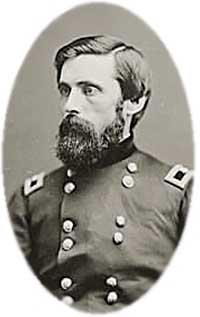 John A. Rawlins
John A. Rawlins
Although Rawlins was a "Douglas Democrat" he received a number of promotions during
the Civil War while serving under General Grant. In 1861, Rawlings was diagnosed with consumption. Following the
war he took a trip to Wyoming for his health and allegedly indicated that
the highest honor he could receive would be to have the spring at what is now
Rawlins named for him. Following Grant's election he was appointed Secretary of War,
but died only five months into his term. The spring, which is now gone, must not have been much. In T. Nelson & Sons, 1871
The Union Pacific Railroad: A Trip across the North American Continent from Omaha to Ogden, the
authors described their stop at Rawlins Springs:
"We pause thirty minutes for refreshment.
The surrounding country presents no features of interest, and the
so-called springs are alkali pools of a very disagreeable taste,
and scarcely less disagreeable aspect."
Indeed, even water from wells was described as tastings like Epsom Salts, until finally in 1925 water
was piped in from Sage Creek.
Among the officers stationed at Ft. Rawlins was Arthur MacArthur, father of
Gen. Douglas MacArthur. Arthur MacArthur was transferred to Ft. Rawlins in Sept.
1869 from a recuitment center in the Harlem in New York. Commamding officer at the
time was Col. Philippe Regis de Trobriand, who during the Civil War had been
a brevet major general and whose father had been a general de brigade
in Bonaparte's Grande Armee.
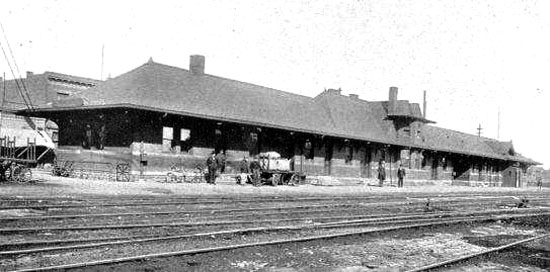
Rawlins Depot
The railroad arrived in 1868. The principal fort, however, was Fort Steele located about
13 miles to the east. The depot depicted in the photo above was constructed in 1901 and is on
the National Register.
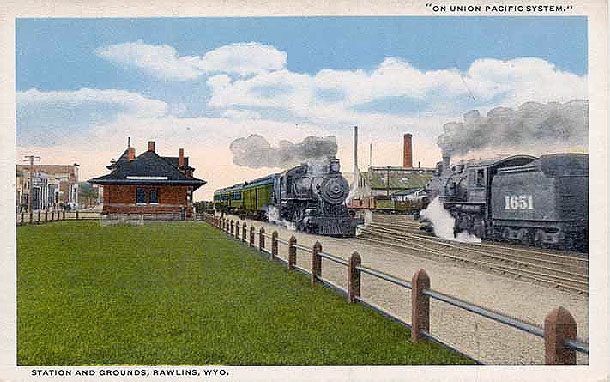
Rawlins Depot.
With the railroad, Rawlins became a transportation center for Northern Colorado and interior
Wyoming. Stage lines ran northward to Lander and southward with daily service to Saratoga and Baggs.
The White River line ran south to Meeker, Colorado.
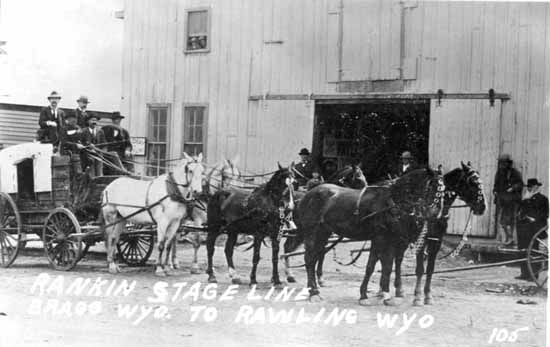
Rawlins-Baggs Stage at Rankin Stables, undated.
The Rankin Stables were owned by the Rankin Brothers, James G. Rankin, Joseph P. Rankin, and
Robert T. Rankin. James served as deputy sheriff under Isaac M. Lawry and Isaac C. Miller until he was
elected as sheriff in his own right on the Republican ticket in 1884. His brother Robert served as jailor and Joseph was appointed as
United States Marshal between 1890 and 1894. Joseph Rankin, however, is most noted as the scout for
T. T. Thornburgh who was massacred at Milk Creek, Colorado. Joseph brought word back to Fort Steele in an
epic 165 mile ride in 28 1/2 hours, changing horses only twice.
Rawlins photos continued on the next page.
|